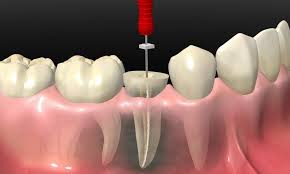Introduction
Dental health is a critical aspect of overall well-being, yet it is often neglected until a serious issue arises. One such painful and potentially dangerous condition is a dental abscess. Characterized by a pocket of pus caused by bacterial infection, an abscess can cause severe pain, swelling, and even systemic health issues if left untreated. A root canal procedure, though often feared due to misconceptions, stands out as an effective treatment for this painful problem. This article delves into the causes of dental abscesses, symptoms, the Root Canal Treatment In Dubai, its effectiveness, and why it should not be dreaded.
Understanding Dental Abscesses
A dental abscess typically occurs when bacteria invade the dental pulp—the innermost part of the tooth containing nerves and blood vessels—through a cavity, crack, or chip in the tooth. The body’s immune response sends white blood cells to fight the infection, leading to pus formation. There are three main types of dental abscesses:
- Periapical Abscess: Occurs at the tip of the tooth root.
- Periodontal Abscess: Affects the gums and supporting structures of the teeth.
- Gingival Abscess: Involves the gums without affecting the tooth or periodontal ligament.
Symptoms and Diagnosis
The symptoms of a dental abscess can range from mild discomfort to excruciating pain. Common signs include:
- Severe, persistent, throbbing toothache
- Sensitivity to hot and cold temperatures
- Swelling in the face, cheek, or neck
- Tender, swollen lymph nodes under the jaw or in the neck
- Foul-smelling breath or a bad taste in the mouth
- Fever
Diagnosis typically involves a thorough dental examination, including X-rays to determine the extent of the infection and to identify any bone loss around the root tip.
The Root Canal Procedure
A root canal is a dental procedure designed to remove the infected pulp, disinfect the root canal system, and seal it to prevent further infection. Here’s a step-by-step outline of the process:
- Anesthesia: Local anesthesia is administered to numb the tooth and surrounding area, ensuring the patient feels no pain during the procedure.
- Access Opening: A small hole is drilled into the tooth to access the infected pulp.
- Pulp Removal: Using specialized tools, the dentist removes the infected pulp from the pulp chamber and root canals.
- Cleaning and Shaping: The empty canals are cleaned, disinfected, and shaped to prepare them for filling.
- Filling: The canals are filled with a biocompatible material, usually gutta-percha, to seal them and prevent re-infection.
- Sealing and Restoration: The access hole is sealed with a temporary or permanent filling. In most cases, a crown is placed over the tooth to restore its function and appearance.
Effectiveness of Root Canal Treatment
Root canal treatment is highly effective in eliminating infection, relieving pain, and preserving the natural tooth. The success rate of root canal therapy is generally high, with studies showing success rates of approximately 90% to 95%. The procedure not only alleviates the immediate pain and infection but also prevents the spread of infection to other parts of the body.
Myths and Realities
Despite its effectiveness, the root canal procedure is surrounded by myths and misconceptions that can cause unnecessary fear. Common myths include:
- Myth: Root canals are extremely painful. Reality: Modern techniques and anesthesia have made root canal procedures no more painful than getting a filling.
- Myth: Tooth extraction is better than a root canal. Reality: Preserving the natural tooth through a root canal is preferable to extraction, which can lead to additional dental problems.
Conclusion
A dental abscess is a serious condition that requires prompt attention to prevent complications. A root canal procedure offers an effective solution to eradicate the infection, alleviate pain, and save the natural tooth. Advances in dental technology and anesthesia have made this treatment relatively painless and highly successful. Understanding the importance of timely dental care and dispelling myths about root canals can help patients make informed decisions and maintain their oral health. If you experience symptoms of a dental abscess, consult your dentist immediately to explore the best treatment options.





Comments